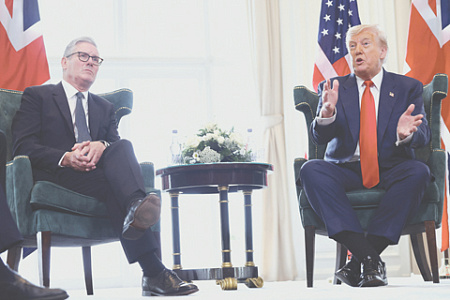
President Donald Trump has dramatically escalated pressure on Moscow, issuing a new ultimatum for Russia to end its conflict with Ukraine within approximately 10 to 12 days. The stark warning comes with a powerful threat: a staggering 100% tariff on goods from any nation that continues to purchase Russian energy resources, effectively weaponizing U.S. trade policy to force a resolution.
This sudden shift follows a period of presidential silence after the third round of Russia-Ukraine negotiations in Istanbul ended in a stalemate. The talks produced little more than an agreement on a prisoner exchange, with Kyiv demanding an immediate ceasefire and Moscow reiterating its initial demands, which Ukraine deems unacceptable. Previously, Trump had given Russia a 50-day deadline, which has now been drastically shortened.
Trump’s newfound assertiveness appears fueled by a recent diplomatic victory with the European Union. Following meetings at his golf club in Scotland with European Commission President Ursula von der Leyen, the EU agreed to a 15% tariff on its exports to the U.S. and committed to replacing Russian oil and gas with American energy supplies. This success seems to have convinced the U.S. President that the threat of high tariffs is a universal tool capable of achieving any diplomatic objective. It was after these talks that Trump declared he was “no longer interested in conversations” with Vladimir Putin, citing a lack of progress.
The new deadline for Moscow is strategically timed to coincide with the August 12 conclusion of U.S. tariff negotiations with China, a key purchaser of Russian energy. Trump is reportedly aiming for a similar deal with Beijing, but it remains unclear if it would require China to halt its Russian energy imports. Should negotiations fail, Trump has threatened to impose prohibitive tariffs on Chinese goods regardless, setting the stage for a high-stakes economic confrontation.
India, another major importer of Russian energy, has also come into focus. While an Indian minister publicly stated the country is “not worried” about forgoing Russian supplies, data from Reuters shows Russia accounts for 35% of India’s oil imports, making a quick substitution challenging. The situation could be heavily influenced by the upcoming OPEC+ meeting. A decision by the oil cartel to increase production could lower global prices, potentially making it easier for India to comply with Trump’s demands and dealing a significant blow to the Russian economy.
Emboldened by his recent successes, President Trump seems to be looking beyond the current conflict, viewing its resolution as a prerequisite for confronting what his administration considers America’s primary adversary: China. According to Politico, the Pentagon is preparing a report for September that could recommend reducing U.S. troop levels in Europe from 100,000 to as low as 60,000. Such a move suggests a strong belief within the White House that hostilities between Moscow and Kyiv will cease by then, allowing for a major strategic pivot.
